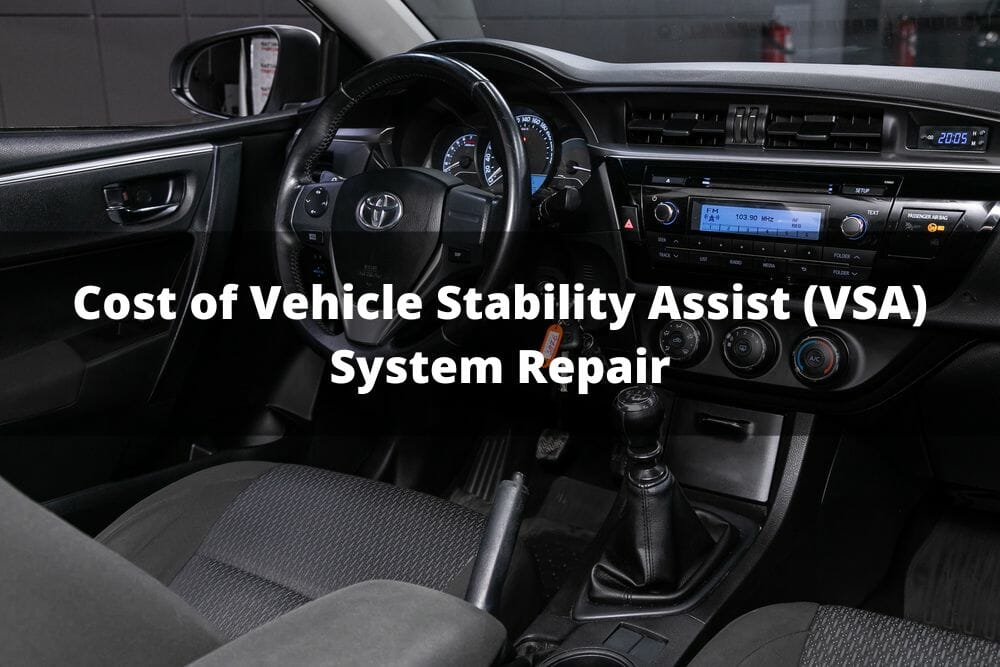The ever-evolving landscape of automotive technology has made driving safer and more enjoyable than ever before. Yet, amidst all this advancement, have you ever pondered just how significant a role safety systems, particularly the Vehicle Stability Assist (VSA) system, play in your everyday driving experience? It’s a fascinating question, especially when considering the myriad of challenges that drivers face on the road.
At its core, Vehicle Stability Assist is an advanced safety feature designed to bolster a vehicle’s stability and enhance handling, especially in precarious conditions. Imagine one rainy evening, your car unexpectedly begins to slide as you navigate a wet turn. In scenarios like these, one might wonder: what safeguards exist to keep me from losing control?
VSA is precisely that safeguard. Developed to counteract loss of traction, this innovative system employs sensors that monitor the vehicle’s direction and speed. When it detects that the wheels are not aligning with the driver’s intended path—say during a sudden turn or when the road conditions are less than ideal—it activates to assist in regaining traction. This process frequently involves selectively braking individual wheels and modulating engine power, thereby enabling the driver to maintain control.
So, how does VSA differentiate itself from other safety mechanisms? Well, the crux lies in its proactive nature. Unlike traditional safety features such as seatbelts or airbags, which serve as last-resort protection, VSA works preemptively. It anticipates potential hazards before they spiral into crises. But don’t assume that VSA operates in isolation; it usually collaborates with other systems, like Anti-lock Braking Systems (ABS) and Traction Control Systems (TCS), to provide a holistic safety net.
It’s crucial to recognize that while VSA enhances vehicle stability and control, it doesn’t make drivers invincible. Drivers must remain vigilant and exercise sound judgment, particularly in adverse weather conditions. This leads us to an interesting consideration: what happens when technology encounters human error? For instance, if a driver attempts to make a sharp turn at high speed, can VSA compensate for such reckless actions? While VSA can indeed mitigate dangerous situations, it’s essential to maintain a symbiotic relationship between technology and responsible driving practices.
Understanding the inner workings of VSA also sheds light on what drivers can do to ensure its efficacy. Regular maintenance of the braking system, tires, and steering components is vital. If any of these components falter, the effectiveness of VSA can diminish, leaving drivers more susceptible to loss of control. Moreover, as with any technological marvel, it’s prudent to stay informed about how the system operates within your specific vehicle model. The unique algorithms and calibration of VSA can differ significantly across manufacturers.
Moreover, embracing the nuances of VSA can lead to enhanced driving strategies. For example, knowing how VSA engages in different scenarios encourages drivers to adjust their driving habits accordingly. Those who take the time to understand their vehicle’s features can cultivate a deeper connection with their driving experience, transforming how they perceive road challenges.
While VSA systems have largely proved reliable and beneficial, there are dissenting opinions regarding their reliance. Some enthusiasts argue that advanced car technologies might foster complacency among drivers, leading to a false sense of security. This raises an intuitive question: when does reliance on technology shift from a supportive tool to an impediment to skilled driving? Consider this: can driving skills deteriorate if we continually lean on automated systems?
As you contemplate the balance between technology and personal skill, it’s crucial to grasp the growing complexity of VSA systems. Newer vehicles incorporate an array of interconnected safety features, including lane-keeping assistance, adaptive cruise control, and collision avoidance systems, fostering a virtual cocoon of safety. Yet, each feature requires active engagement from the driver.
Acknowledging VSA’s limitations can also foster a more grounded perspective on driving safety. While VSA can significantly enhance vehicle control during challenging conditions, it is not a panacea for poor driving habits. Therefore, the vehicle owner must strive to nurture a resilient driving mindset equipped with knowledge, respect for the road, and an appreciation for their vehicle’s capabilities.
One potential challenge emerging on the horizon is the rapid evolution of automotive technology itself. As features evolve and new systems are integrated into vehicles, drivers may grapple with their understanding and effective use. This necessitates continued education, both for seasoned motorists and new drivers alike. Engaging with informational resources and attending workshops on vehicle safety technologies can empower drivers to navigate these advancements with confidence.
In closing, the Vehicle Stability Assist system embodies the impressive strides industry professionals have made towards enhancing automotive safety. However, as with all innovations, technology alone cannot shoulder the entirety of the responsibility. Drivers must remain committed to informed, conscientious, and skillful driving practices–thereby ensuring that advanced safety systems serve as the invaluable allies they are meant to be. So, the next time you slip behind the wheel, remember: while VSA is there to assist, your vigilance and decision-making are irreplaceable elements in the journey of safe driving.
